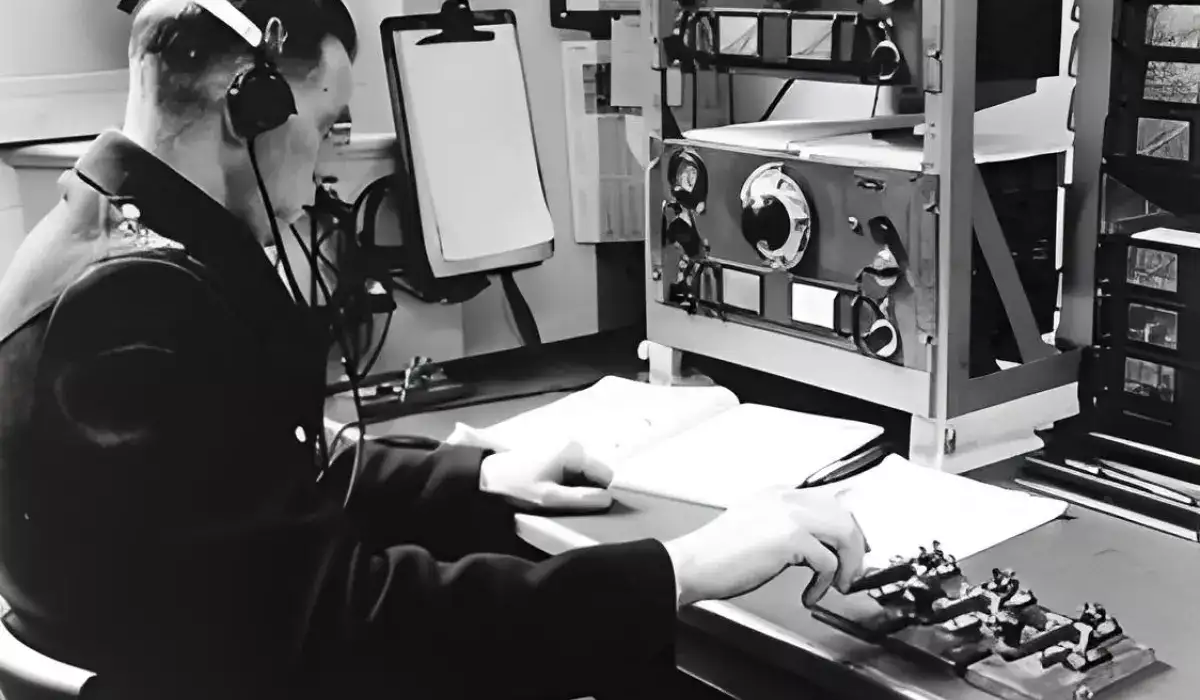Learn Your Name In Morse Code Day, observed on January 11th each year, is an event that celebrates the long-standing communication coding system invented by Samuel Morse and Alfred Vail. This day promotes the unimaginable fun of translating one’s own name, or possibly even a secret message, into Morse code.
Participants are invited to engage in this unique art of communication, that once played a crucial role in telecommunication, by exploring and converting their names into a series of dots and dashes.
History of Learn Your Name In Morse Code Day
Morse code, devised by Samuel F. B. Morse and Alfred Vail, is a unique coding system employed for telecommunication. It uses varied signal lengths— identified as dots and dashes, or dits and dahs— to represent the characters in a text. This innovative communication method was created in the mid-19th century with the advent of the telegraph.
In the early 1830s, Samuel Morse, an accomplished artist, visualized the profound possibilities of telegraphs for efficient communication. He collaborated with Alfred Vail, a mechanic and machine expert, to develop the Morse code between 1835 and 1844. The coding framework they conjured assigned a distinct arrangement of dots and dashes to different letters, numbers, and punctuation symbols.
The Morse code was employed for the first time on May 24, 1844, with the dispatch of the noteworthy message, “What hath God wrought!” This message marked the inauguration of the newly built telegraph line that connected Washington, D.C., to Baltimore.
The subsequent growth of Morse code was swift and widespread. Several telegraph companies across America and Europe had adopted Morse code by the 1850s. The usage of Morse code extended to radio communication by the end of the 19th century. However, by the mid-20th century, this trend began to recede with the advent of more technologically advanced modes of communication.
Despite its reduced usage in contemporary times, its relevance persists in certain sectors, including radio, aviation, and amateur radio services. The Learn Your Name In Morse Code Day serves to honor this unique system and encourages individuals to delve deeper into its understanding and appreciation.
Learn Your Name In Morse Code Day Timeline
Morse Code Invented
Samuel Morse and Alfred Vail develop a coding system, containing letters and numbers encoded as sequences of dots and dashes, known as Morse code.
Morse Code Gets Recognition
The US Congress appropriates $30,000 to establish a telegraph line between Washington and Baltimore using Morse Code.
International Morse Code
A uniform system of Morse Code, known as International Morse Code, was agreed upon and became the standard.
Start of the Decline
With the development of the telephone, the use of Morse code began to decline.
Last Commercial Use in the US
The last commercial Morse code message in the US was sent.
Learn Your Name In Morse Code Day
This day was established to spread awareness about Morse Code and its contributions to communication technology.
Ideas to Celebrate Learn Your Name In Morse Code Day
Learn and Share
Dedicate the day to mastering your name in Morse Code and then post a video or image on social media demonstrating it. Use the specified hashtag #LearnYourNameInMorseCodeDay to bring everyone's effort together.
Morse Code Workshop
Plan a hands-on workshop, in-person or virtual, inviting people to delve into Morse Code. Start off with instructing them how to transform their names into Morse Code. Offer a certificate of participation as a keepsake.
Classroom Fun
As an educator, utilize this day to incorporate a unique learning experience. Have your students write their names in Morse Code on the chalkboard. Make it a competitive game to determine who can master it first.
Quiz Night
Plan a Morse Code themed quiz event where players have to decode Morse code messages or identities. You can host it online using platforms like Zoom or Google Meet, allowing people from all over to take part.
Online Class
Conduct a webinar or tutorial teaching the basics of Morse Code, especially how to convert your name into it. This session can be hosted on platforms like Zoom or Google Meet and anyone around the globe can sign up.
5 Interesting Facts About Morse Code
Invented by a Painter
Samuel Morse, renowned for his artistry in portrait painting, shifted his interests later in life to create what we now know as Morse Code in the 1830s. An unexpected turn of career, indeed.
SOS in Morse Code
Commonly mistaken as an acronym for phrases such as 'Save Our Souls' or 'Save Our Ship', SOS in Morse Code has no such connotations. Its adoption was due to simplicity: three short, three long, and three short signals again.
First Words in Morse Code
On May 24, 1844, Samuel Morse transmitted the first message in his code from the U.S. Capitol in Washington D.C. to Baltimore in Maryland, saying 'What hath God wrought', a poignant quote from the Bible in Numbers 23:23.
Titanic’s Cries for Help
When the tragedy struck the RMS Titanic in 1912, Morse Code was used to signal distress. Ships and shore stations picked up these fateful transmissions, making it one of the most well-known uses of Morse Code.
Morse Code for the Deaf-Blind
The Helen Keller National Center has ingeniously used Morse Code as a teaching aid to enhance the communication skills of the deaf-blind community.
Learn Your Name In Morse Code Day FAQs
Next Learn Your Name In Morse Code Day Dates
| Year | Date | Day |
|---|---|---|
| 2023 | January 11th | Wednesday |
| 2024 | January 11th | Thursday |
| 2025 | January 11th | Saturday |
| 2026 | January 11th | Sunday |
| 2027 | January 11th | Monday |
| What is the pattern? | Every January 11th | |
Learn Your Name In Morse Code Day Word Search
- Dots
- Dashes
- Communication
- Decode
- Encode
- Morse
